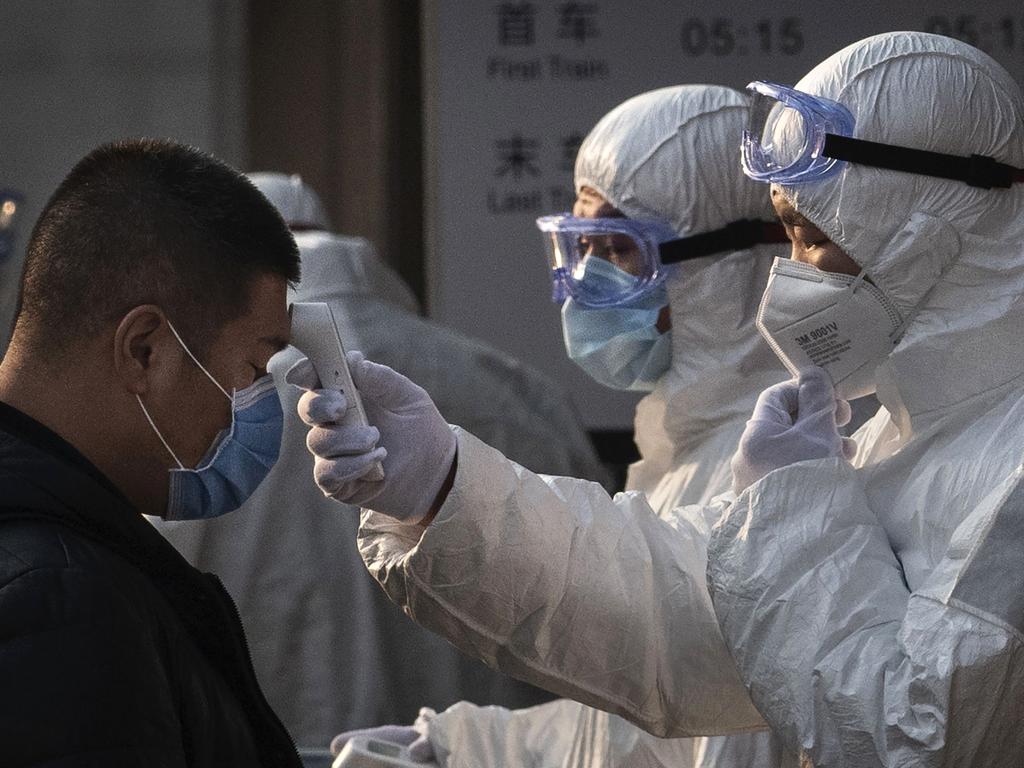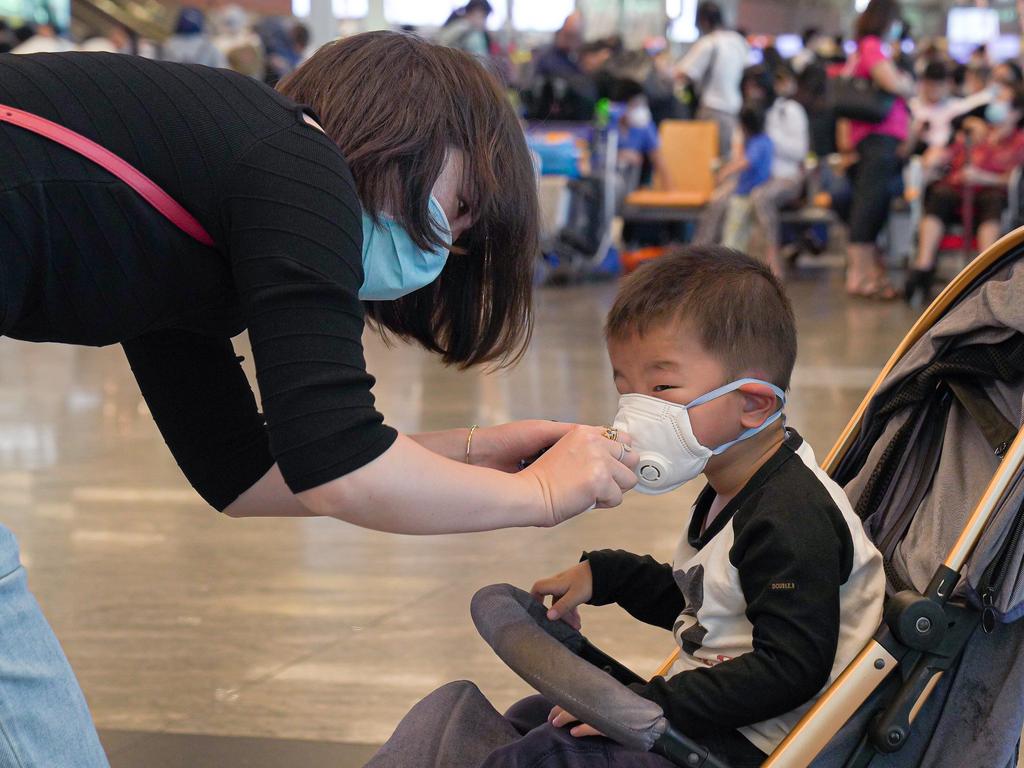What are the symptoms of the killer coronavirus, and are Australians at high risk?
As scientists rush to understand how the deadly coronavirus is spreading, these are the symptoms the infected seem to have in common.
The rapid spread of the deadly coronavirus had put health authorities on alert and sparked a global panic.
The virus has claimed over 130 lives in China and infected nearly 6000 around the world, including seven people in Australia, since it was discovered in the Chinese city of Wuhan.
While the World Health Organisation has stopped short of declaring an international public health emergency, scientists and health experts are racing to understand how this new virus is being transmitted and how contagious it is.
They’re also trying to determine how many people may have been infected with the Wuhan coronavirus but don’t know it.
RELATED: Deadly virus is ‘accelerating its speed’, China warns
RELATED: Traveller brags about cheating coronavirus scanners at airport

“It is hard to understand the mortality rate associated with this new virus currently, as we are only detecting severe cases in the initial stages of the epidemic, rather than the milder or asymptomatic cases,” Chinese scientist Lili Ren wrote in the The Lancet medical journal, AFP reported.
The Wuhan coronavirus is part of a family of viruses that originate in animals before being spread to humans. Some coronaviruses that have been found in humans have caused only mild, cold-like symptoms.
But a coronavirus has occasionally been more severe, such in the case of severe acute respiratory syndrome, or SARS, which caused 774 deaths out of 8096 cases worldwide during the 2002/03 outbreak.
Chinese scientists wrote in the The Lancet the symptoms of the Wuhan coronavirus were similar to those of SARS.
A study of 41 early-detected cases of the new virus found all patients had pneumonia and most had a fever, AFP reported. Three-quarters were coughing and more than half had trouble breathing.
However, unlike with SARS, they did not have runny noses or sore throats and were not sneezing. The patients also had no stomach issues, such as diarrhoea, which was seen in about a quarter of SARS cases.
Australia’s Department of Health advises symptoms may include fever, flu-like symptoms such as coughing, sore throat and headaches, and difficulty breathing.
“Symptoms can range from mild illness to pneumonia,” the department said.
It is understood those exposed to the virus may not present with symptoms for up to a week.
Older people and those with those with underlying health conditions are believed to be more affected.
Scientists also said those infected with the Wuhan coronavirus were “in a less serious condition than with SARS”, which had a mortality rate of 9.5 per cent.
“For the moment, the mortality rate is less than five per cent,” Yazdan Yazdanpanah, the head of infectious diseases at Paris Diderot University, said of the new coronavirus.
Health authorities are urging people to take precautions to reduce risk of infection, such as regularly washing hands with soap and water or an alcohol-based hand sanitiser, thoroughly cooking meet and eggs, and avoiding contact with wild or farm animals.

While authorities race to contain the spread of the killer virus, Australia’s Chief Medical Officer Professor Brendan Murphy said the risk to most Australians was generally low.
“The only risk if you have a close family contact of someone who’s come from China who is unwell and that’s pretty unlikely,” he told the ABC.
“There’s no evidence of human-to-human transmission outside of China. All of the cases outside of China do seem to have come from China and we are very well prepared in Australia.
“We have very strong public health responses systems as evidenced by the way that the four cases identified yesterday have been managed.”
Prof Murphy said the coronavirus’s common symptoms had made things challenging for health authorities.
“It is flu season in China, and probably most people with those sort of symptoms which are relatively non-specific — fever is very prominent, cough, breathlessness — don’t have this virus,” he said.

“That’s why we’re focusing our public health message in Australia to say that if you have come from that Hubei province of China in the last two or three weeks and you become unwell, please tell ahead to your doctor or your emergency department, call ahead and
tell them that you have had that travel history and be tested.
“Most people will probably be negative but we need to capture anyone who’s come from China, particularly before they closed down that area late last Thursday.”
NSW Health has confirmed three men, aged in the 30s, 40s, and 50s, are being treated for the virus in Sydney’s Westmead Hospital after arriving on different flights from China in January.
A fourth confirmed Australian case, in Victoria, involves a man aged in his 50s who returned from China last week. He was in Australia for six days before being diagnosed.
Airports around the world have started taking precautions to deal with an anticipated influx of Chinese tourists travelling for the Lunar New Year holidays.
The world’s busiest travel hub, Dubai International Airport, said it would thermally screen all passengers arriving on direct flights from China and hand out information brochures.




